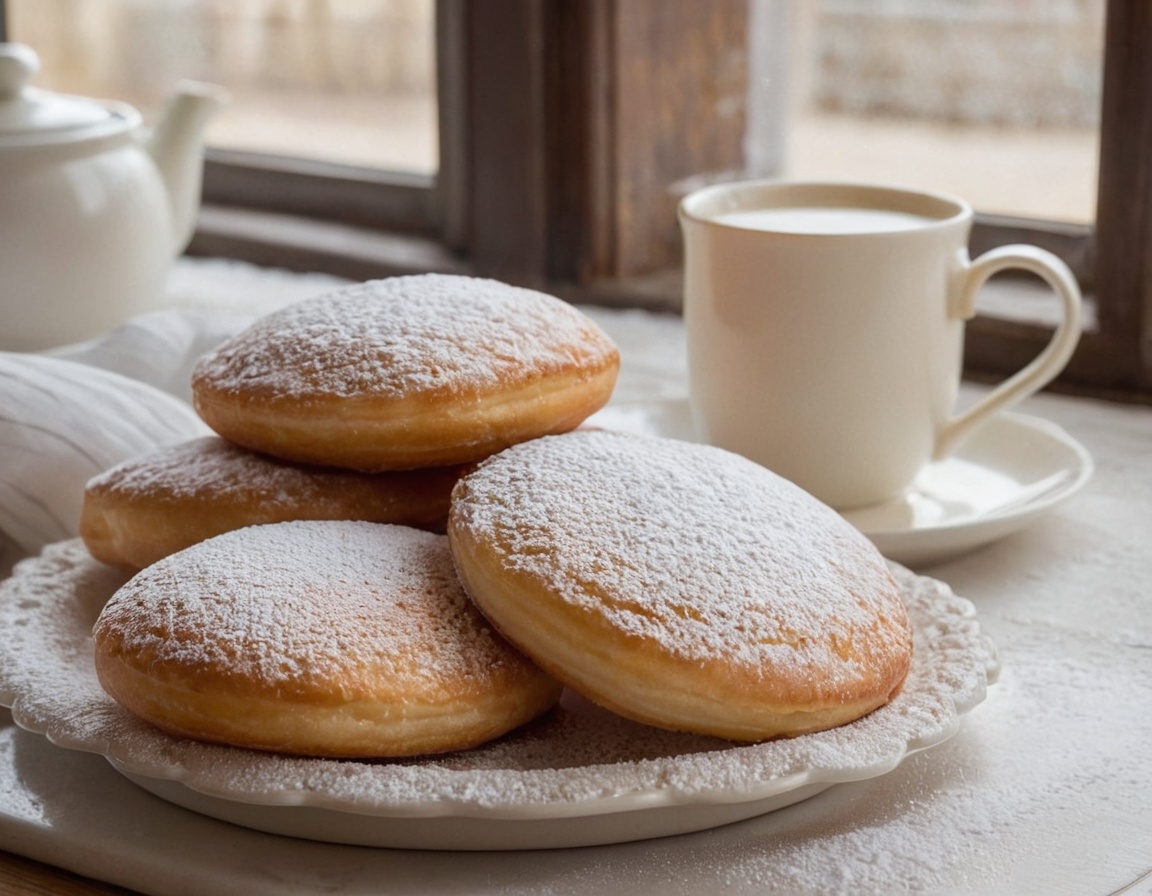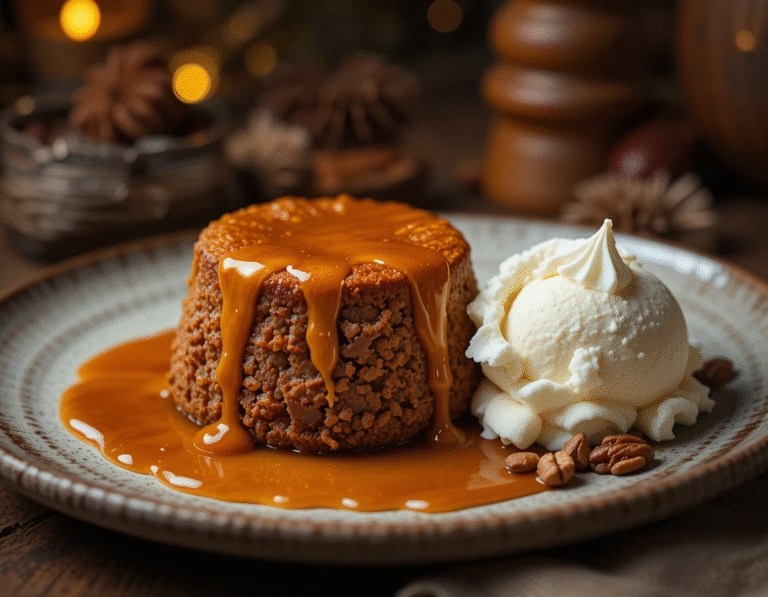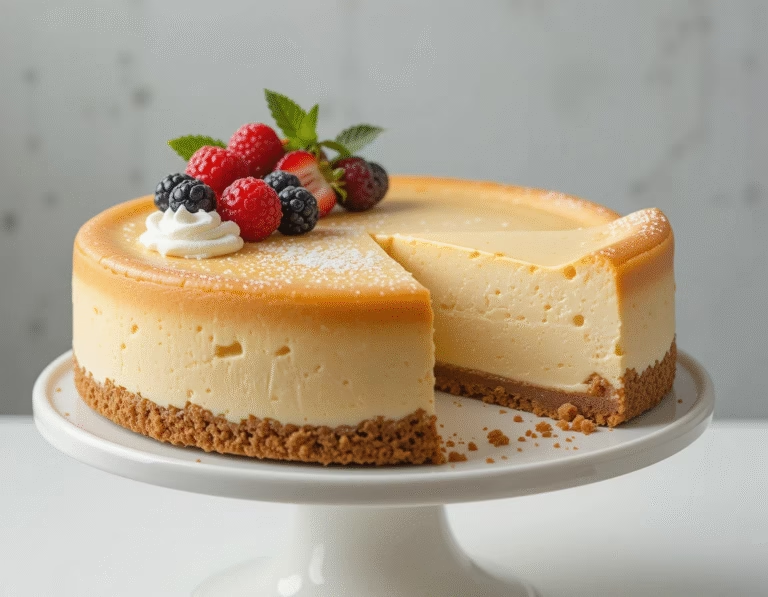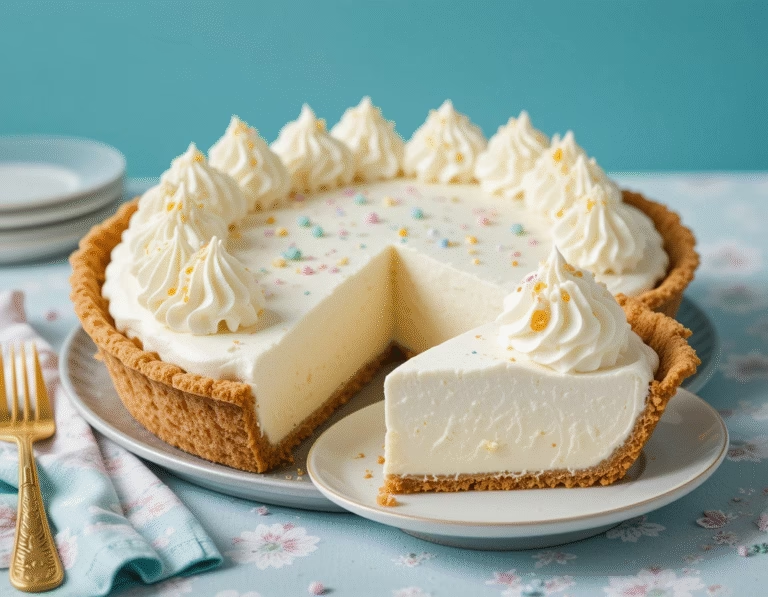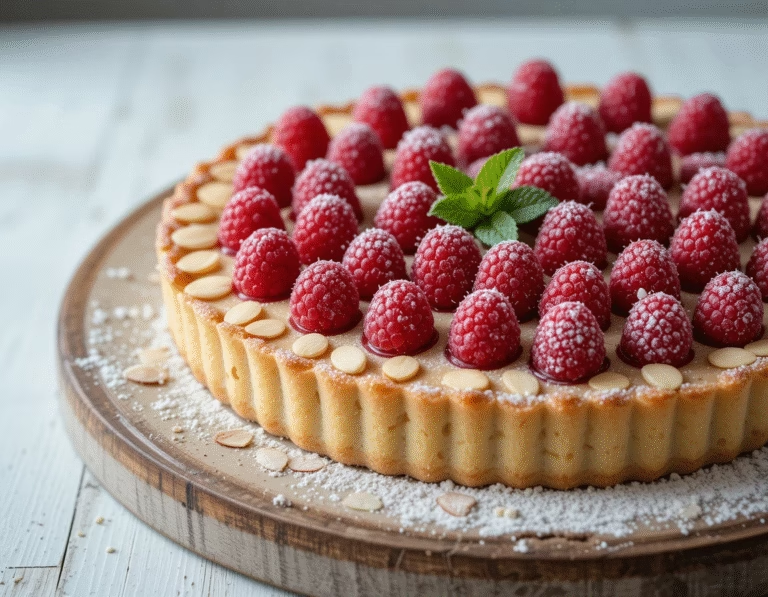how to make Vanilla French Beignets Recipe
Vanilla French beignets are a delightful indulgence, often associated with the bustling streets of New Orleans and the charming patisseries of Paris. While these airy, deep-fried treats are a staple of Mardi Gras celebrations and café breakfasts, their simplicity and universal appeal make them a year-round favorite. The word “beignet” literally means “fritter” in French, but to many, it translates to comfort, joy, and sweet satisfaction. With their light texture, subtle vanilla aroma, and snow-like dusting of powdered sugar, vanilla French beignets bridge tradition and modern cravings effortlessly.
At first glance, beignets may seem similar to doughnuts, but they have distinct differences. Beignets are usually square or rectangular with a pillow-like puff, lacking the hole of a typical doughnut. They’re made from a yeast-based dough that’s allowed to rise, resulting in that signature lightness inside and a golden, crispy exterior. When you add vanilla to the mix, it elevates the flavor profile from classic to captivating. The gentle floral sweetness of vanilla rounds out the rich, fried exterior, creating a well-balanced treat.
Though they have roots in French cuisine, beignets became iconic in the U.S., particularly in Louisiana, where French colonists brought the recipe centuries ago. New Orleans-style beignets, made famous by the legendary Café du Monde, have helped keep this culinary treasure alive and evolving. Our version stays true to the traditional French base but adds the unmistakable warmth of vanilla—offering a comforting twist that feels both familiar and new.
For home bakers, vanilla French beignets are an ideal project. They require a bit of patience and attention to detail, but the reward is well worth the effort. Whether you’re preparing them for a weekend brunch, a special holiday breakfast, or an afternoon treat, these golden pillows of joy will leave your kitchen smelling divine and your guests coming back for seconds.
In this blog post, we’ll walk you through everything you need to know to master vanilla French beignets—from the ingredients and step-by-step instructions to expert tips and storage strategies. If you’re looking to bring a taste of France to your home kitchen, these beignets are a delicious place to start.
What You’ll Need
Before you begin crafting your batch of vanilla French beignets, it’s essential to gather all the right ingredients and tools to ensure success. Because beignets rely heavily on the proper development of dough and frying technique, preparation is key. You’ll want to have both common pantry staples and a few kitchen tools ready to go to keep the process smooth and stress-free.
Ingredients for Vanilla French Beignets:
- 2 1/4 teaspoons (1 packet) active dry yeast
- 1/4 cup warm water (about 110°F)
- 3/4 cup whole milk, warmed
- 1/4 cup granulated sugar
- 1/2 teaspoon salt
- 1 large egg, room temperature
- 1 tablespoon vanilla extract
- 3 tablespoons unsalted butter, melted
- 3 cups all-purpose flour (plus extra for dusting)
- Vegetable oil for frying
- Powdered sugar, for dusting
Each ingredient has a role to play. The yeast is essential for that airy, puffed-up texture; warm water and milk help activate the yeast and blend the dough; sugar gives a touch of sweetness and helps with browning; while butter and egg provide richness and structure. Most importantly, vanilla extract imparts a smooth, aromatic flavor that distinguishes these beignets from their plain counterparts.
Tools You’ll Need:
- Large mixing bowl
- Stand mixer with dough hook (optional but helpful)
- Plastic wrap or kitchen towel for covering dough
- Rolling pin
- Sharp knife or dough cutter
- Thermometer (to monitor oil temperature)
- Heavy-bottomed pot or deep fryer
- Slotted spoon or spider strainer
- Cooling rack lined with paper towels
- Fine mesh sieve or sifter (for powdered sugar)
A thermometer is especially important when frying, as maintaining the oil temperature between 350°F and 370°F ensures even cooking and prevents greasy or undercooked beignets. Using a slotted spoon or spider strainer makes it easier to lift the pastries out safely, while a cooling rack helps drain excess oil.
Having everything prepped before you begin will make the experience enjoyable and efficient. These seemingly simple tools and ingredients come together to form a recipe that’s both elegant and homey. Now that you’re equipped with what you need, you’re ready to start crafting your vanilla French beignets like a pro.

How to Make (Include Full Measurements)
Making vanilla French beignets at home is a satisfying experience that brings the charm of a Parisian café right into your kitchen. While the process does involve yeast and frying, don’t be intimidated—this recipe is straightforward when broken down into simple steps. With the full list of measurements provided, you’ll be set up for success from the start.
Ingredients Recap:
- 2 1/4 teaspoons (1 packet) active dry yeast
- 1/4 cup warm water (110°F)
- 3/4 cup whole milk, warmed
- 1/4 cup granulated sugar
- 1/2 teaspoon salt
- 1 large egg, room temperature
- 1 tablespoon vanilla extract
- 3 tablespoons unsalted butter, melted
- 3 cups all-purpose flour (plus extra for dusting)
- Vegetable oil (for frying)
- Powdered sugar (for dusting)
Instructions:
- Activate the Yeast
In a small bowl, dissolve the active dry yeast in the warm water. Let it sit for about 5–10 minutes until it becomes foamy. If it doesn’t foam, your yeast might be expired or your water may have been too hot or too cold. - Mix the Wet Ingredients
In a large mixing bowl (or the bowl of a stand mixer), combine the warm milk, granulated sugar, salt, egg, vanilla extract, and melted butter. Stir until well combined. Add the foamy yeast mixture. - Form the Dough
Gradually add the all-purpose flour, about 1 cup at a time, mixing continuously. If using a stand mixer, switch to the dough hook and knead on medium speed for about 5–7 minutes. If mixing by hand, knead on a floured surface for 8–10 minutes until the dough is smooth and elastic. - Let the Dough Rise
Form the dough into a ball and place it in a lightly greased bowl. Cover with plastic wrap or a clean towel and let it rise in a warm place for 1 to 1.5 hours, or until it doubles in size. - Roll and Cut the Dough
Once risen, punch down the dough and roll it out on a lightly floured surface to about 1/4-inch thickness. Using a sharp knife or dough cutter, cut the dough into 2-inch squares. - Heat the Oil
In a deep, heavy-bottomed pot or deep fryer, heat 2–3 inches of vegetable oil to 360°F. Use a thermometer to monitor the temperature consistently. - Fry the Beignets
Carefully add 3–4 dough squares at a time into the oil. Fry each batch for 1–2 minutes per side, or until golden brown and puffed. Flip halfway using tongs or a slotted spoon. Avoid overcrowding the pot. - Drain and Cool
Remove the beignets from the oil and let them drain on a wire rack lined with paper towels. - Dust with Powdered Sugar
While still warm, generously dust the beignets with powdered sugar using a fine mesh sieve or sifter. Serve immediately for the best flavor and texture.
These beignets are best enjoyed fresh but can be made a few hours ahead of serving if needed. You can even make the dough the night before and refrigerate it overnight for a quicker breakfast prep. The result is a batch of fluffy, aromatic vanilla-scented treats that melt in your mouth with every bite.
Serving and Storage Tips
Serving vanilla French beignets is as much about presentation and timing as it is about flavor. Their golden, puffed appearance and snowy dusting of powdered sugar make them a show-stopping treat at any brunch, tea party, or festive gathering. But how you serve them and store any extras can significantly impact their texture and taste.
Best Time to Serve
Vanilla beignets are at their peak when freshly made and still slightly warm. This is when their airy centers and crispy outsides are most pronounced. The light dusting of powdered sugar melts slightly into the warm pastry, creating that perfect sweet bite. Ideally, serve them within 30 minutes of frying for optimal texture.
They’re perfect for:
- Morning brunches with coffee or chai
- Holiday breakfasts (especially Christmas or Easter mornings)
- Afternoon tea or snack platters
- Dessert boards with fruit and whipped cream
You can even pair them with simple sides like vanilla yogurt, fruit preserves, or a warm dipping sauce like chocolate ganache or vanilla glaze.
Serving Variations
To mix things up, consider these fun serving ideas:
- Fruit-Topped Beignets: Add fresh berries, mango slices, or caramelized bananas on top.
- Stuffed Beignets: Inject with pastry cream, vanilla custard, or seedless fruit jam using a piping bag.
- Beignet Sandwiches: Slice them in half and fill with mascarpone or cream cheese and fruit.
These versatile treats can be dressed up or down depending on the occasion.
How to Store Beignets
While beignets are best enjoyed the same day, you can store leftovers for a short time. Place cooled beignets in an airtight container lined with paper towels to absorb any excess oil. Store at room temperature for up to 1 day. Reheat them in a 350°F oven for 5–7 minutes to bring back some of the crispiness.
Avoid refrigerating beignets, as this tends to make them dense and soggy. Freezing is not ideal either, as the thawing process compromises their texture. If you must freeze them, place unfried dough squares between layers of parchment paper in an airtight container. Freeze for up to 1 month, then thaw in the refrigerator and allow to rise again before frying.
By following these tips, you can ensure that your vanilla French beignets retain their delicious flavor and signature texture, whether served fresh or reheated. With their elegant simplicity and crowd-pleasing appeal, beignets are sure to become a staple in your dessert rotation.
Mistakes to Avoid
When making vanilla French beignets, a few small missteps can mean the difference between pillowy perfection and dense disappointment. Whether you’re new to deep-frying or a seasoned baker trying out beignets for the first time, understanding common mistakes can save time and ingredients, while ensuring delicious results.
1. Using Yeast That’s Not Active
One of the biggest pitfalls in making beignets is using old or improperly activated yeast. If your yeast doesn’t foam when combined with warm water, it’s not active and won’t allow the dough to rise properly. This will result in flat, chewy beignets rather than light, airy ones. Always check the expiration date and make sure your water is between 105°F and 115°F—too hot and it kills the yeast; too cold and it won’t activate.
2. Skipping the Rise Time
Beignets depend heavily on the dough having ample time to rise and develop air pockets. Rushing this process or using shortcuts like increasing the heat to speed things up can impact the dough’s flavor and texture. The dough needs time to double in size naturally in a warm, draft-free environment—usually about 1 to 1.5 hours.
3. Not Rolling Dough Evenly
If your dough isn’t rolled out evenly, your beignets will fry inconsistently. Some may puff up beautifully while others stay thick and undercooked inside. Use a rolling pin to get a consistent 1/4-inch thickness across the board and cut pieces that are equal in size to ensure even cooking.
4. Overcrowding the Oil
Adding too many pieces at once will drop the oil temperature, which leads to greasy and soggy beignets. Always fry in small batches—no more than three or four pieces at a time—and give each piece enough space to puff and float freely. Also, monitor the temperature with a thermometer to keep it around 360°F consistently.
5. Using the Wrong Oil or Temperature
Avoid strongly flavored oils like olive or sesame, which can affect the flavor of the beignets. Instead, use a neutral oil such as vegetable or canola. Also, frying at too low of a temperature can result in oily beignets, while too high can brown the outside before the inside is fully cooked. Maintain the right temperature throughout the frying process.
6. Skimping on the Vanilla or Sugar
Vanilla is the star flavor here, and cutting back on it dulls the overall taste. Likewise, beignets should be dusted generously with powdered sugar—don’t be afraid to make them look like little snow-capped mountains! A light dusting won’t bring the same visual appeal or taste.
By being mindful of these errors, you’ll be better prepared to bake up a batch of golden, fluffy vanilla beignets that are worthy of a patisserie window display. Learning what not to do is just as important as knowing the correct steps, especially when it comes to a treat as delicate and delightful as this.
Tips and Tricks
French beignets may look like a bakery-only indulgence, but with a few handy tricks, you can master them in your own kitchen. These tips are based on tried-and-true practices that elevate your beignet game from good to phenomenal, ensuring both ease in the kitchen and delicious results on your plate.
1. Plan Ahead With the Dough
You can prepare the beignet dough the night before and let it rise slowly in the fridge overnight. This not only deepens the flavor but also helps break up the preparation time. Just make sure to let the dough come to room temperature for about 30 minutes before rolling and frying.
2. Use a Stand Mixer for Easier Kneading
While it’s possible to knead the dough by hand, using a stand mixer with a dough hook attachment saves effort and ensures a more uniform texture. Knead until the dough is soft, smooth, and pulls away from the sides of the bowl—usually around 7 minutes.
3. Cut with a Pizza Wheel or Bench Scraper
To achieve uniform squares and clean cuts, use a pizza wheel or bench scraper instead of a knife. This helps avoid tugging the dough, which can deflate some of the air bubbles you’ve worked hard to create during the rise.
4. Test Oil Temperature Without a Thermometer
If you don’t have a kitchen thermometer, drop a small piece of dough into the oil. It should sizzle immediately and rise to the top. If it browns too quickly or burns, the oil is too hot. If it sinks and barely bubbles, the oil is too cold. It’s not foolproof but works in a pinch.
5. Add a Touch of Citrus
Want to brighten the flavor? Add 1/2 teaspoon of finely grated lemon or orange zest to the dough along with the vanilla extract. The citrus aroma pairs wonderfully with the light texture of the beignets and adds a subtle but elegant twist.
6. Elevate with Dips and Sauces
Serve your beignets with a side of chocolate ganache, vanilla glaze, or fruit compote for an extra-special experience. These easy additions can turn a casual breakfast treat into a decadent dessert.
7. Use a Mesh Strainer for Sugar Dusting
Rather than spooning powdered sugar over your beignets, use a fine mesh strainer or sifter for a professional, even finish. Hold it over the beignets and gently tap the sides for a delicate dusting.
By keeping these tips in mind, you’ll find your beignet-making process not only more enjoyable but also more consistent and flavorful. These little techniques can make a big difference, especially when you want to impress guests or simply treat yourself to something special.
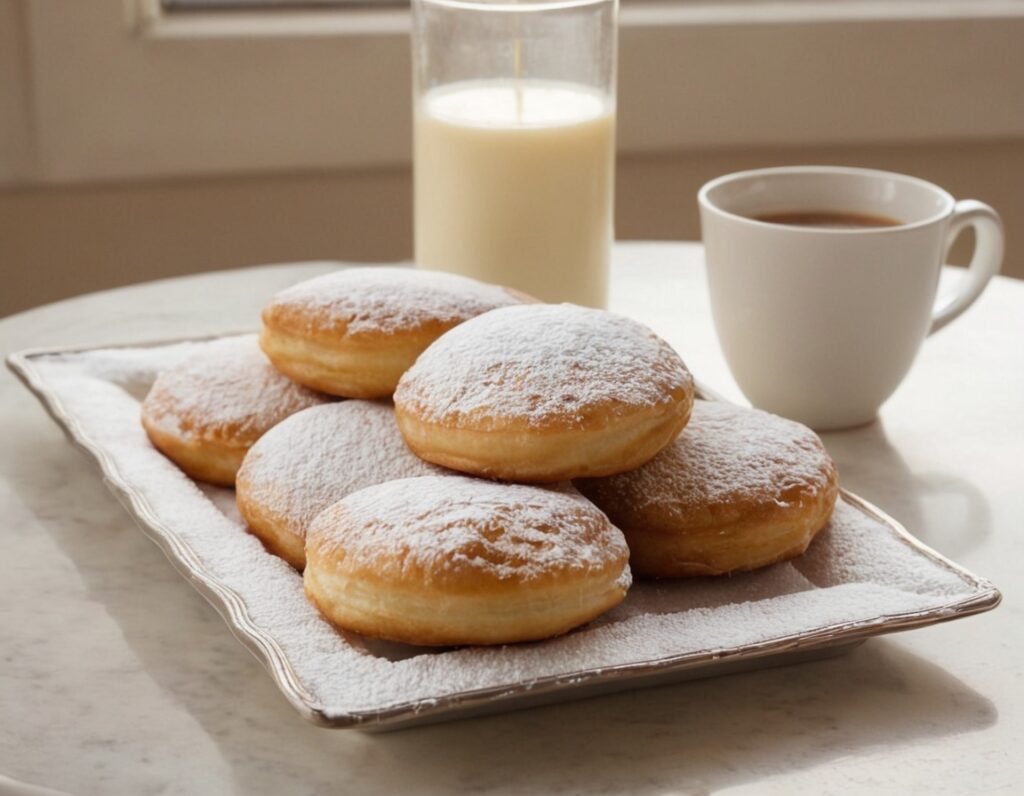
Suggestions
Vanilla French beignets are incredibly versatile and lend themselves well to a wide range of customizations. Whether you’re serving them for brunch, dessert, or a special occasion, here are several thoughtful suggestions to help you make the most out of this classic pastry—whether you’re preparing them traditionally or giving them a creative twist.
1. Try Filling Them
While classic beignets are typically hollow and sugar-dusted, you can easily elevate them by filling them with luscious creams or jams. Pastry cream, vanilla custard, lemon curd, or berry compote all work wonderfully. Use a piping bag fitted with a long nozzle to inject the filling once the beignets are cool. This little surprise in the center makes them extra indulgent and bakery-worthy.
2. Flavor Variations
You can give your vanilla beignets a flavor makeover by incorporating additional extracts or spices into the dough. Almond extract, cardamom, nutmeg, or a hint of cinnamon can complement the vanilla beautifully. You could also switch out the vanilla for something like maple or coconut extract for a new twist.
3. Make a Dipping Trio
Take your beignet experience up a notch by serving them with a selection of dipping sauces. Offer a trio of chocolate ganache, strawberry puree, and vanilla glaze for variety. These dips transform the experience from simple to show-stopping and are perfect for brunch buffets, dessert bars, or tea parties.
4. Serve with Coffee or Tea
Vanilla beignets are a natural match for warm beverages. Serve them alongside freshly brewed coffee, café au lait, or vanilla chai tea. Their airy texture and lightly sweet flavor pair perfectly with robust, creamy drinks and elevate your overall serving presentation.
5. Make Mini Beignets for Parties
For baby showers, weddings, or family gatherings, consider making mini beignets about 1 to 1.5 inches square. They’re easier to handle for crowds and look adorable when served in small paper cones or on tiered trays. Plus, guests love the option to pop them in their mouths as finger food.
6. Use Themed Toppings for Holidays
Vanilla beignets can be adapted for different occasions just by switching up the toppings. For example:
- Valentine’s Day: Add pink or red powdered sugar or drizzle with raspberry glaze.
- Halloween: Use orange glaze or black sprinkles.
- Christmas: Dust with green and red sugars or add crushed peppermint candy.
7. Make It a Sundae
Turn your beignets into an over-the-top dessert by pairing them with vanilla ice cream, a drizzle of caramel or chocolate, and whipped cream. Add chopped nuts or a cherry on top, and you’ve got a fun take on a beignet sundae that’s perfect for birthdays or celebrations.
These suggestions offer countless ways to personalize your vanilla French beignets for every setting and preference. Whether you’re sticking to the classics or adding flair for a special event, the versatility of this recipe makes it a staple you’ll come back to again and again.
FAQ
1. What is the difference between French beignets and doughnuts?
While both are fried dough pastries, French beignets are typically lighter, airier, and square-shaped compared to the round, often glazed or ring-shaped doughnuts common in American bakeries. Beignets are also traditionally dusted with powdered sugar rather than coated with a glaze or sprinkles.
2. Can I make vanilla French beignets without a deep fryer?
Yes! All you need is a heavy-bottomed pot or Dutch oven and a thermometer. Be sure to maintain a steady oil temperature of around 360°F. Frying in small batches helps avoid drops in oil temperature and ensures the beignets cook evenly.
3. What type of flour should I use for the best beignet texture?
All-purpose flour works best for this recipe. Bread flour can make the beignets too chewy, while cake flour may result in a weaker structure. Stick with all-purpose for a balance of structure and tenderness.
4. Can I make them ahead of time?
Beignets are best enjoyed fresh, but you can make the dough in advance and refrigerate it overnight. Let it sit at room temperature before rolling and frying. If you must store leftovers, reheat them in the oven at 300°F for a few minutes to refresh the texture—avoid microwaving, which makes them soggy.
5. Can I freeze beignets?
Yes, you can freeze the dough before frying or freeze fried, un-sugared beignets. Reheat in the oven from frozen and dust with powdered sugar just before serving. Be warned, though—frozen beignets may lose a bit of their airy structure.
6. Why didn’t my beignets puff up?
There are several possibilities: the dough might not have risen enough, the oil temperature could have been too low, or you may have rolled the dough too thin. Ensure your yeast is active and allow the dough to rise fully before cutting and frying.
7. Is there a dairy-free or vegan version of this recipe?
Yes! You can substitute plant-based milk (like almond or oat milk) and use vegan butter. For the egg, try using a flaxseed meal replacement (1 tbsp flaxseed meal + 2.5 tbsp water = 1 egg). The flavor may be slightly different, but you’ll still get a tasty beignet.
8. What oil is best for frying beignets?
Choose a neutral oil with a high smoke point like vegetable, canola, or sunflower oil. These oils won’t overpower the delicate vanilla flavor and ensure even cooking.
These frequently asked questions address the most common concerns and tweaks bakers encounter when making beignets. Whether you’re just starting or refining your technique, understanding these answers will ensure consistent results every time.

Conclusion
Vanilla French beignets are more than just a delightful pastry—they are a symbol of warmth, celebration, and indulgence. With their golden, crispy exterior and light, pillowy interior dusted in snowy powdered sugar, these treats never fail to bring a touch of joy to any occasion. Whether you’re introducing them to a brunch spread, elevating your afternoon tea, or serving them as a sweet finish to a dinner party, beignets effortlessly charm guests and bakers alike.
One of the greatest appeals of these beignets is their versatility. You can keep things classic with a simple dusting of powdered sugar or experiment with fillings, glazes, and flavorings. Their neutral vanilla base offers the perfect canvas for creativity, allowing you to adapt them to different holidays, events, and personal preferences. From bite-sized versions perfect for parties to indulgent variations filled with custard or served sundae-style, the options are endless.
Not only are these beignets delicious, but the process of making them can also be deeply satisfying. Working with yeast dough, watching it rise, and transforming it into airy pillows with just the right fry—there’s a rhythm and a joy in this type of baking that many home cooks fall in love with. Even if it takes a few tries to perfect, the learning experience itself is enjoyable and rewarding.
Best of all, these beignets are a non-intimidating introduction to French-inspired pastry. You don’t need a professional kitchen or fancy equipment—just basic pantry ingredients, a bit of patience, and the willingness to fry. In return, you get a beautiful homemade pastry that rivals anything from a bakery.
For families, vanilla beignets can become a cherished weekend tradition or a fun holiday project. For entertainers, they are a crowd-pleaser that always leaves guests impressed. And for passionate home bakers, they provide a satisfying canvas for new ideas and flavor profiles.
In closing, if you’re looking for a dessert that’s simple yet impressive, comforting yet elegant, and nostalgic yet customizable—vanilla French beignets check every box. So dust off your apron, heat up your oil, and treat yourself to the unmistakable pleasure of warm, fresh beignets. Once you try them, they’ll likely become a treasured staple in your baking repertoire.

